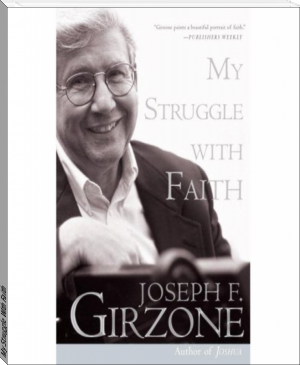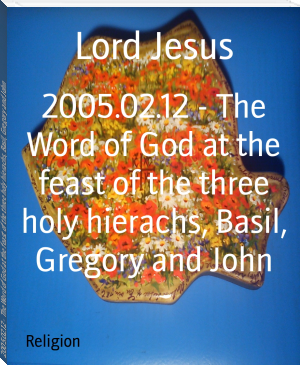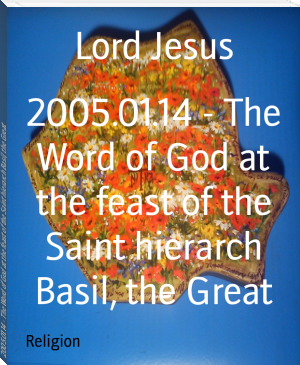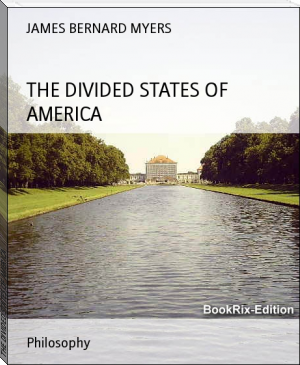The Book of Missionary Heroes by Basil Mathews (young adult books to read .txt) 📕

- Author: Basil Mathews
- Performer: -
Book online «The Book of Missionary Heroes by Basil Mathews (young adult books to read .txt) 📕». Author Basil Mathews
Again Shomolekae went away by wagon, and this time he travelled away by the edge of the desert southward until at last he reached the garden at Kuruman where as a boy he used to frighten the birds from the fruit trees. He was now a very clever man at driving wagons and oxen.
This, as you know, is not so easy as driving a wagon with two horses is in Britain. For there were as many as sixteen and even eighteen oxen harnessed two by two to the long iron chains in front of the wagon.
There were no roads, only rough tracks, and the wagon would drag through the deep sand, or bump over great boulders of rock, or sink into wet places by the river. But at such times one of the natives always led the two front oxen through the river with a long thong that was fastened to their horns.
So, in order to drive a wagon well, Shomolekae needed to be able to manage sixteen oxen all at once, and keep them walking in a straight line. He needed to know which were the bad-tempered ones and which were the good, and which pulled best in one part of the span and which in another; and how to keep them all pulling together and not lunging at one another with their horns.
Shomolekae also had to be so bold and daring that, if lions came to eat the oxen at night, he could go with the gun and either frighten them away or actually shoot them.
So you see Shomolekae was very clever, and was full of good courage.
While he was living at Kuruman a man came to him one day and said:
"John Mackenzie is alone at Shoshong, and there is no one who can drive his wagon well for him."
The man who told him this was, as it happened, going by wagon to Shoshong, where John Mackenzie lived.
"Let me go with you," said Shomolekae.
So he got up into the wagon, and away they went day after day northward on the same journey that Shomolekae had taken when he was a boy.
So Shomolekae served Mackenzie for years as wagon driver at Shoshong.
At last the time came when Mackenzie himself left the tribe at Shoshong—left Khama and all his people—and travelled southward to build at Kuruman a kind of small school where he could train young black men to be missionaries to their own people. And Shomolekae himself went to Kuruman with Mackenzie. He set to work with his own hands, and he helped to make and lay bricks, to put in the doors and windows, and to place the roof on the walls, until at last the little school was built.
And when it was actually built Shomolekae himself went to be a student there, and Mackenzie began to train him to be a preacher and a teacher to his own people.
For three years Shomolekae worked hard in the college, learning more and more about Jesus Christ, preparing himself to go among his own people to tell them about Him.
At last the time came when he was ready to go; and he started out, and travelled long, long miles through sandy places, and then by a river, until at last he reached a town of little thatched huts called Pitsani, which means "The Town of the Little Hyena."
In that town he gathered the men and women and the boys and girls together and taught them the things that he knew.
While Shomolekae was at Pitsani there came into that part of Africa a new missionary, whose name was Mr. Wookey.
It was decided that Mr. Wookey should go a long, long journey and settle down by the shores of Lake Ngami, which, you remember, David Livingstone had discovered long years before.
Shomolekae wished to go out with Mr. Wookey into this country and to help. So he took the wagon and yoked the oxen to it, loaded it up with food and all the things needed for cooking as they travelled along, and drove the oxen dragging the wagon over many hundreds of miles of country in which leopards barked and lions roared, until at last they came to the land near Lake Ngami.
When they came into this land, and found a place in which to settle down, clever Shomolekae mixed earth into mud just as boys and girls do in order to make mud-pies, but he made the mud into the shape of bricks, and then placed the bricks of mud out into the sun to dry.
The sunshine was very, very hot indeed—so hot that the bricks became hard and dry and strong. Day after day Shomolekae worked until he had made a big heap of bricks. With these he built a little house for Mr. Wookey to live in. But these sun-dried bricks soon spoil if they get wet, so he had to build a verandah to keep the rain from the walls.
When the house was built and Mr. Wookey was settled in it, they travelled still further up the river to learn what people were living there.
After a while it was decided that Shomolekae should go and live in a small village by the river, and there again begin his work of telling the men and women of Jesus Christ, and teaching the boys and girls to read.
In his satchel, which was made of odd bits of calico print of different patterns, Shomolekae had a hymn-book with music. The hymn-book was written in the language of the people—the Sechuana language—and Shomolekae taught them from the book to sing hymns. The music was the sol-fa notation.
This is one of the hymns:
Leha ke le mo dibin;
A re yalo mo kwalon,
A re yalo mo pedun.
E, Yesu oa me,
E, Yesu oa me,
Oa me, mo loraton.
O ntehetse molato;
O mpusitse timelon,
O ntlhapisa mo pedun.
This is what these words mean in English. I expect you know them very well.
For the Bible tells me so;
Little ones to Him belong,
They are weak, but He is strong.
Yes, Jesus loves me,
Yes, Jesus loves me—
The Bible tells me so.
Heaven's gate to open wide;
He will wash away my sin,
Let His little child come in.
But, you see, the missionary had to alter the words sometimes so as to make the Sechuana lines come right for the music; and the second verse really means:
He has paid my debt;
He has brought me back from where I strayed;
He has washed my heart.
Yes, my Jesus. Mine in love."
They would learn the words off by heart because there was only the one hymn-book, and they would sing them together, Shomolekae's voice leading.
They learned them so well that sometimes when the mothers were out hoeing in the fields, or the little boys were paddling in their canoes and fishing in the marshy waters, you would hear them singing the hymns that they learned in Shomolekae's little school hut.
Then on Sunday they would have Sunday-school, and when that was over Shomolekae would gather the chocolate-faced men and women and boys and girls together—all who would come—and he would teach them to kneel down and pray to the one God, Who is our Father, and they would sing the hymns that they had learned, and then he would speak to them a simple little address, telling them of the Lord Jesus.
But Shomolekae desired always to go further and further, even though it was dangerous and difficult. So he got a canoe and launched it in the river by the village and paddled further and further up the stream, under the overhanging trees, and sometimes across the deep pools in which the big and fierce hippopotami and crocodiles lived.
He paddled up the River Okanvango, though many times he was in danger of his life. The river was not like rivers in our own country, deep and with strong banks; it was often filled all over with reeds, and as shallow as a swamp, and poor Shomolekae had to push his way with difficulty through these reeds. Always at night the poisonous mosquitoes came buzzing and humming around him. The evil-tempered hippopotamus would suddenly come up from the bottom of the river with his wicked beady eyes, and great cavernous mouth, with its enormous teeth, yawning at Shomolekae as though he quite meant to swallow him whole.
On the banks at night the lions would roar, and then the hyenas would howl; but Shomolekae's brave heart held on, and he pushed on up the river to preach and teach the people in the villages near the river.
So through many years, with high courage and simple faith, Shomolekae worked.
A good many boys and girls in England before they are ten years old own many more books than Shomolekae ever had and have read more than he. They also have better homes than he, for he pushed on from one mud hut to another along the rivers and lakes, and all the possessions that he had in the world could be put into the bottom of his canoe.
But our Heavenly Father, Who loves you and me, went with him every step of the way. When Shomolekae taught the boys and girls to sing hymns in praise of Jesus, even in a little mud hut, He was there, just as He is in the most beautiful church when we worship Him. Now God has taken Shomolekae across the last river to be with Himself.
Shomolekae was a negro with dark skin and curly hair. We are white children with fair faces and light hair. But God is his Father as well as ours and loves us all alike and wishes to gather us together round Him—loving Him and one another.
[56] Pronounce Shoh-moh-leh-kei.
CHAPTER XXII THE WOMAN WHO CONQUERED CANNIBALSMary Slessor
(Dates, b. 1848, d. 1915)
I. The Mill-girlThe Calabar Girls at the Station
As the train from the south slowed down in Waverley Station, Edinburgh, one day in 1898, a black face, with eyes wide open with wonder, appeared at the window. The carriage door opened and a little African girl was handed down onto the platform.
The people on the station stopped to glance at the strange negro face. But as a second African girl a little older than the first stepped from the carriage to the platform, and a third, and then a fourth black girl appeared, the cabmen and porters stood staring in amused curiosity.
Who was that strange woman (they asked one another), short and slight, with a face like yellow parchment and with short, straight brown hair, who smiled as she gathered the little tribe of African girls round her on the railway platform?
The telegraph boys and the news-boys gazed at her in astonishment. But they would have been transfixed with amazement if they had known a tenth of the wonder of the story of that heroic woman who, just as simply as she stood there on the Waverley platform, had mastered cannibals, conquered wild drunken chiefs brandishing loaded muskets, had faced hunger and





Comments (0)